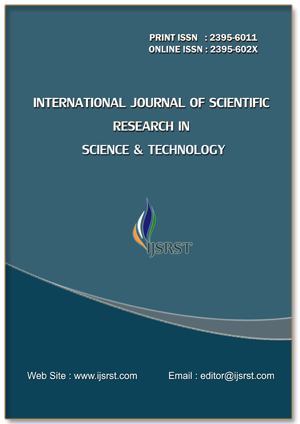Extraction of Astaxanthin from Hyperproducing Haematococcus Pluvialis Using Different Oils
DOI:
https://doi.org/10.32628/IJSRST24114319Keywords:
Astaxanthin, microalgae Haematococcus pluvialis vegetable oil, extractabilityAbstract
Astaxanthin is a high antioxidant which is red carotenoid pigment obtained from many microalgae species. It is an important preservative of the immune system and it is used in the treatment of cancer, skin and heart diseases. The most efficient source of astaxanthin is Haematococcus pluvialis microalgae. The aim of the present investigation was to extract the astaxatnin, a food, a feed and pharmaceutical valuable secondary carotenoid from the Haematococcus pluvialis with common vegetable oils. Without a cell harvest process step, the culture was directly mixed with the vegetable oils; the astaxanthin inside the cell was extracted into the vegetable oil phase by hydrophobic interaction. We have found that the maximum extractability of astaxanthin 98.28 % in soybean oil from mutant strain.
Downloads
References
De Holanda H. D. and Netto F. M., “Recovery of components from shrimp (Xiphopenaeus kroyeri) processing waste by enzymatic hydrolysis,” Journal of Food Science, 2006, 71(5):C298 – C30. DOI: https://doi.org/10.1111/j.1750-3841.2006.00040.x
In M. J., Choi J. H. , Kim S., Chae H. J. , Kim D. H. Enhanced extraction of astaxanthin from Haematococcus pluvialis using enzymes treatment, Journal of Korean Society for applied Biological chemistry 2008 51:247-249.
Guerin M., Huntley M. E., and Olaizola M., “Haematococcus astaxanthin: applications for human health and nutrition,” Trends in Biotechnology, 2003, 21(5): 210–216. DOI: https://doi.org/10.1016/S0167-7799(03)00078-7
Hussein G., Sankawa U., Goto H., Mutsumoto K., Watanabe H Astaxanthin a carotenoid with potential in human health and nutrition . J. Nat. prod 2006, 69:443-449. DOI: https://doi.org/10.1021/np050354+
Kang C.D., Sim S. J., Direct extraction of astaxanthin from Haematococcus pluvialis using vegetable oils , Biotechnol. Lett. . 2008, 30:400-441. DOI: https://doi.org/10.1007/s10529-007-9578-0
Kobayashi M., Kurimura Y., Sakamoto Y., Tsuji Y., Selective extraction of astaxanthin and chlorophyll from green alga Haematococcus pluvialis. Biotechnol. Tech 1997, 11:657-660. DOI: https://doi.org/10.1023/A:1018455209445
Lorenz R. T. , Cysewski G. R ., Commercial potential for Haematococcus microalgae as natural source of astaxanthin . Trends biotechnol 2000,18:160-167. DOI: https://doi.org/10.1016/S0167-7799(00)01433-5
Nagaraj, S., Arulmurugan, P., Rajaram, M.G., & Rengasamy, R., Enhanced production of astaxanthin at different physico-chemical parameters in the green alga Haematococcus pluvialis Flotow. Phycological Society, India, 2012, 42(1):59-71.
Sarada R., Vidhyavathi R, Usha D., and Ravishankar G. A., “An efficient method for extraction of astaxanthin from green alga Haematococcus pluvialis,” Journal of Agricultural and Food Chemistry, 2006, 54 (20): 7585–7588. DOI: https://doi.org/10.1021/jf060737t
Seabra L.M. J. and Pedrosa L. F. C., “Astaxanthin: structural andfunctional aspects,” Revista de Nutricao, 2010, 23(6):1041– 1050. DOI: https://doi.org/10.1590/S1415-52732010000600010
Shah, M. M. R., Liang, Y., Cheng, J. J., & Daroch, M. Astaxanthin-producing green microalga Haematococcus pluvialis: from single cell to high value commercial products. Frontiers in plant science, 2016, 7. DOI: https://doi.org/10.3389/fpls.2016.00531
Downloads
Published
Issue
Section
License
Copyright (c) 2025 International Journal of Scientific Research in Science and Technology

This work is licensed under a Creative Commons Attribution 4.0 International License.
https://creativecommons.org/licenses/by/4.0





